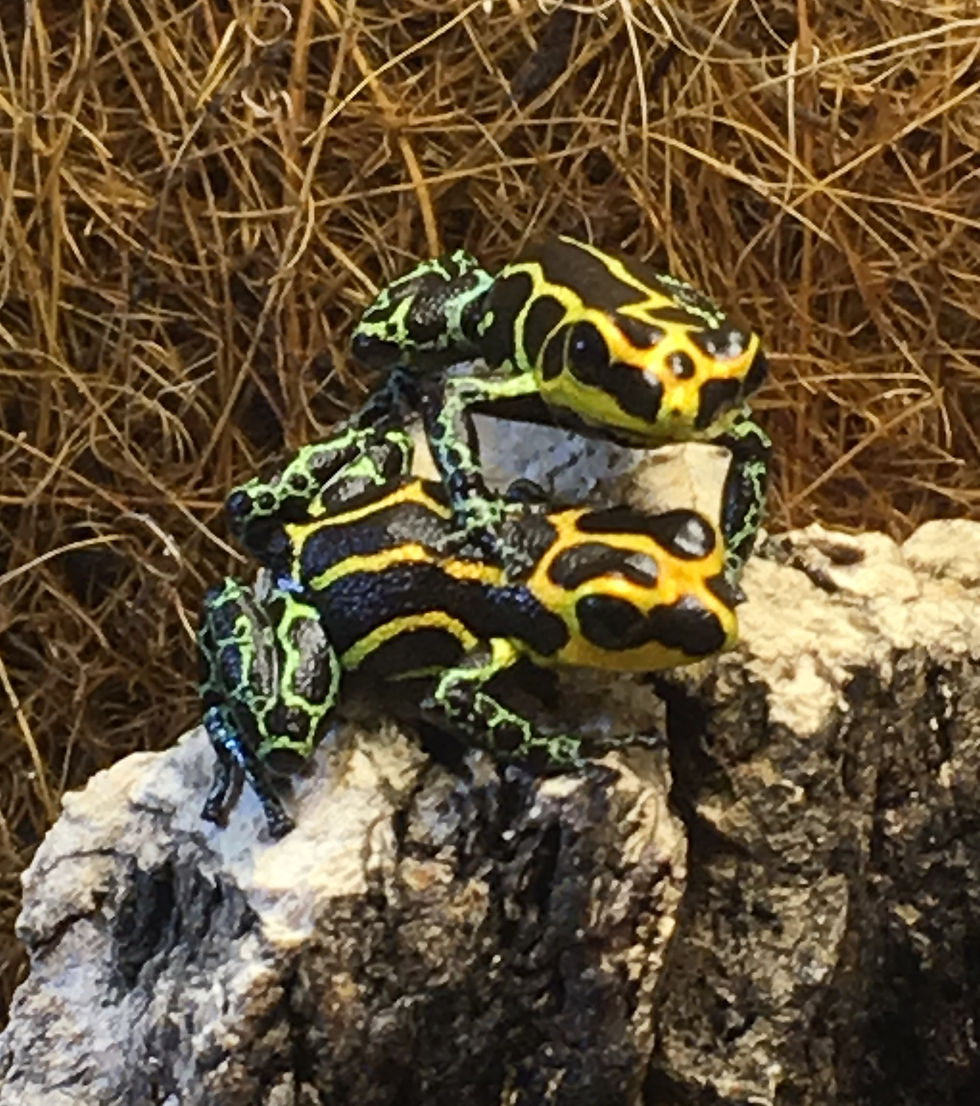Poison Dart Frogs
- Ricster

- Jul 23, 2019
- 3 min read
Updated: Jan 15, 2020

Allow me to introduce my pair of Poison Dart Frogs! As you can see they seem to be bonding well. I don't want to disillusion you but they are very small – thumb nail-size in fact. But As you can see they come in splendid colours and are quite lively and intrepid when they are out and about. They have what I would call character; indulge me a smidgen of anthropomorphism. They always do it in nature programmes; (actually they overdo it but that is another topic.)
These are Ranitomeya imitator and they normally live in Peru. This species produces many variations or “morphs” that imitate other frogs from their area. Now I know your thinking “Are they poisonous? These ones aren't because the deadly poison they could carry is concocted from their diet when in in the wild – such as certain insects. As you know the natives use this deadly nerve agent on the tips of their blow darts to bring down large animals in the forests.
As I type this I can hear the male singing – it has a pleasant trill – they tend do this when I have given the tank a good water spray. By the way they live in a vivarium – my set up is a living ecosystem – no plastic plants here m'lord. I like to think of it as a paradise for dart frogs – there are no predators anyway.

They are rather particular about their environment -since in the wild they live in a fairly stable conditions– they do like high humidity and a temp between 21-27 degree C in the day and between 17-21 at night (don-cha know!). Now since we have a heat wave on I will maybe need to put a frozen cooler block thing in to keep the temperature down – though generally room temperature is usually fine.
Now I have at times considered them a burden becauseas as you see- they do need attention. They can also live over 10 years! Surprising for such a small creature when you think your lucky to get a few years from a hamster. They also need some vitamin supplements -since they do not get enough in captivity. They have plenty of tiny springtails and small tropical white woodlice to feed on but nowhere near the variety they would in the wild (no poison see). I supplement with fruit flies now and again dusted with vitamin powder so they stay healthy. Not to mention the special lamp that helps them produce vitamin D – just like we do.
The point is that all this trouble was ameliorated (nice word!) by the expectation of them breeding. They have a very interesting life cycle. They mate for life for a start which used to be the general idea for humans I believe. The female will lay some eggs and the male will transport the newly emerged young into a some water pond such as is found in the centre of the bromliads that grow in there region– for me a film canister filled with water is waiting to serve that purpose. The male will then feed the developing tadpole – sometimes using unfertilised eggs from the female. In this way they are able to breed in very small water pockets – hence they can exploit an ecosystem that would normally be unavailable to other frogs.
Now this is all very well; but I have a problem. I bought these two as a young pair. Only one sang -that is the male as would be expected, the other was shyer and less active and didn't sing - female! They were not breeding however and I wondered why. Recently I was encourage in that they were engaging in bonding behaviour -the male would climb on top of the female for example. And generally they were hanging out together. So I was thinking that this looked promising.
Recently I discovered that they are now both singing – So I have two males and I don't know what to do. Anyway they have distracted me from a strange occasional urge passing to get into model railway making.
Maybe they are happy and gay; but I would like some breeding action. Watch this space for any developments.




Comments